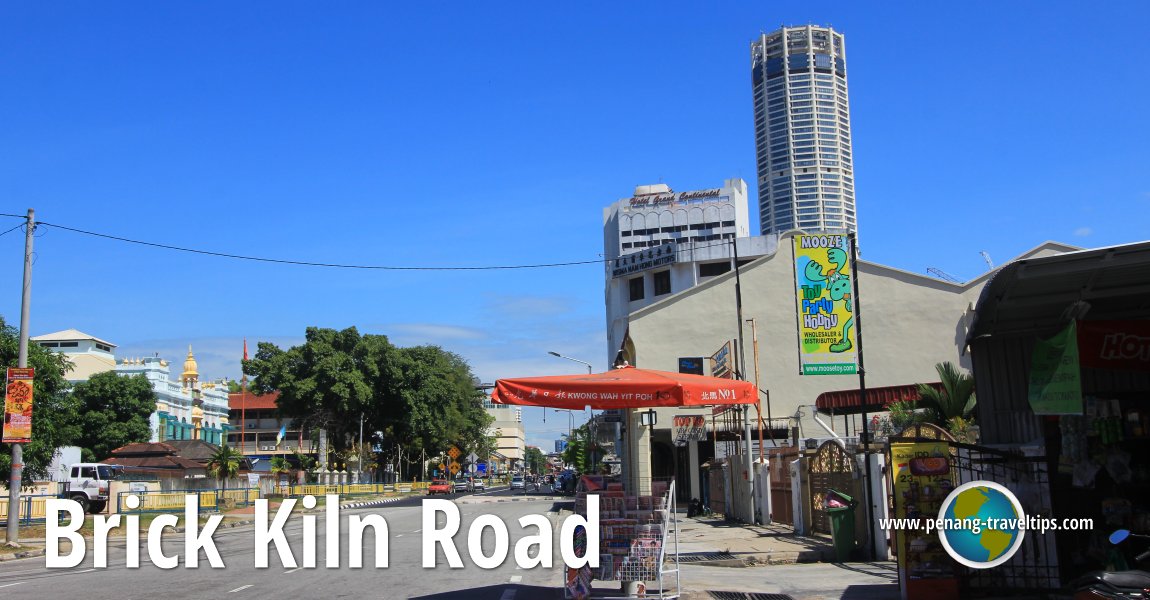 Brick Kiln Road (3 February 2013)
Brick Kiln Road (3 February 2013)
B. Melayu
Brick Kiln Road
 (Malay: Jalan Gurdwara; Penang Hokkien: Hong3 Chia3 Lor33
(Malay: Jalan Gurdwara; Penang Hokkien: Hong3 Chia3 Lor33  ) is a road in George Town outside the heritage zone. Its original name and present-day character is reflective of how much developed George Town as a whole had become.
) is a road in George Town outside the heritage zone. Its original name and present-day character is reflective of how much developed George Town as a whole had become.Brick Kiln Road was built for an industrial and working-class neighborhood when George Town began to expand beyond the Prangin Canal. In the earlier days, Brick Kiln Road was just a rural road leading south from Penang Road, at an angle from Dato Kramat Road. A brick kiln that existed in the area in the second half of the 19th century gave this road its name.
 Map of Jalan Gurdwara, Penang
Map of Jalan Gurdwara, Penang
Hotels along Brick Kiln Road
- Hotel Neo Penang
 (GPS: 5.41227, 100.32845)
(GPS: 5.41227, 100.32845) 
 Sights along Brick Kiln Road
Sights along Brick Kiln Road
- Hin Bus Depot (GPS: 5.4122, 100.32813)

- Sri Vazhi Vidum Murugan Temple (GPS: 5.40581, 100.32683)

 Eateries along Brick Kiln Road
Eateries along Brick Kiln Road
- Chayu Kafei Restaurant
- Deen Maju Nasi Kandar (GPS: 5.41062, 100.32814)

- Ju Bao Lou Cafe (GPS: 5.41292, 100.32853)

- Kassim Nasi Kandar (GPS: 5.41414, 100.32838) (moved across Brick Kiln Road to nearby Dato Kramat Road)
- Kedai Nasi Kandar Wonderlite (GPS: 5.41242, 100.32816)

- Kedai Kopi Bin Sin (GPS: 5.41204, 100.32837)

Shopping Malls and Department Stores on Brick Kiln Road
- Gama Department Store (GPS: 5.41349, 100.32815)

Places of Worship on Brick Kiln Road
- Diamond Jubilee Sikh Gurdwara (GPS: 5.41076, 100.32769)

- Phu Thor Yen Temple (GPS: 5.40869, 100.32795)

Commercial Buildings along Brick Kiln Road
- Adorna Gold Building (GPS: 5.40495, 100.32576)

- Hexagon Tech Park (GPS: 5.40575, 100.32629)

- Menara Perdana (GPS: 5.40625, 100.32667)

Schools along Brick Kiln Road
- Sekolah Kebangsaan Tan Sri P. Ramlee (GPS: 5.41118, 100.32796)

Government Buildings on Brick Kiln Road
- Pusat Pemeriksaan Konsaimen (GPS: 5.41029, 100.32786)

 Businesses along Brick Kiln Road
Businesses along Brick Kiln Road
- 3 in 1 Eddie Fashion Shop (GPS: 5.4136, 100.32858)
- Autobinee (GPS: 5.41114, 100.32823)
- Chin Soon Tyre & Battery (GPS: 5.41262, 100.32846)
- Ester Hair Design (GPS: 5.41241, 100.32844)
- Gala Tailor (GPS: 5.41353, 100.32857)
- Great Wall Unisex Salon
- JJ Hair Saloon (GPS: 5.41135, 100.32824)
- Kedai Motor Liong (GPS: 5.41236, 100.32841)
- King's Tailor (GPS: 5.41336, 100.32855)
- Peace Unisex Hair Saloon (GPS: 5.41253, 100.32845)
- Percetakan Al Falah (GPS: 5.4133, 100.32855)
- Pulau Pinang Driving Institution
- Sinseng Shoes (GPS: 5.41345, 100.32857)
- Star Tailor (GPS: 5.41322, 100.32854)
- Wonderlite Mini Market (GPS: 5.4133, 100.32855)
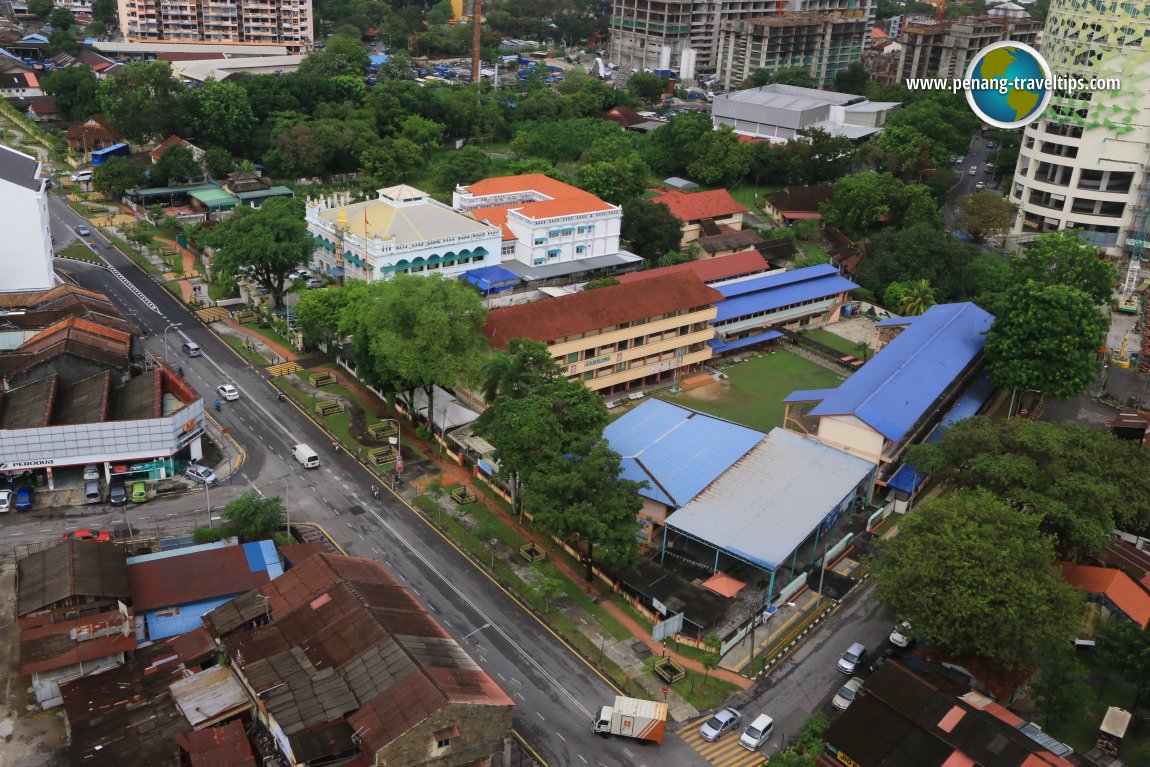 Brick Kiln Road, as seen from Hotel Neo+ Penang (27 May 2017)
Brick Kiln Road, as seen from Hotel Neo+ Penang (27 May 2017)
Brick Kiln Road marks the inland side of the nine (initially seven) parallel roads that were aligned with the Prangin Canal, and was given the Hokkien names of Koay1 Kang3nga1 Thau3 Tiau3 Lor33 (first road after the river), which became Magazine Road
 , followed by the second, third roads, and so forth, until Sandilands Street makes up the nineth.
, followed by the second, third roads, and so forth, until Sandilands Street makes up the nineth.The Sikh community established a settlement here in the 1880s. They were brought to Penang by Captain Speedy, who had hired them to police the volatile tin mining areas of Larut. There was a former police barracks for the Sikhs along Brick Kiln Road. The land was given to the Sikh community by the Resident Councillor of Penang in 1897 (probably Charles Walter Sneyd-Kynnersley) for them to build their temple. As it was the year of Queen Victoria's diamond jubilee, the temple became known as the Diamond Jubilee Sikh Gurdwara or Gurdwara Sahib Khalsa Dharmak Jatha. Today, the road takes its official name after the gurdwara.
Due to the presence of the switchback railway, to transport bricks and tin-ore, at Brick Kiln Road, it was known in Hokkien as Hong3 Chia3 Lor33
 or "windmill road" in Hokkien, due to the presence of windmills in the area used for rice milling1. To the Malays, the road was known as Bakar Bata ("brick kiln").
or "windmill road" in Hokkien, due to the presence of windmills in the area used for rice milling1. To the Malays, the road was known as Bakar Bata ("brick kiln").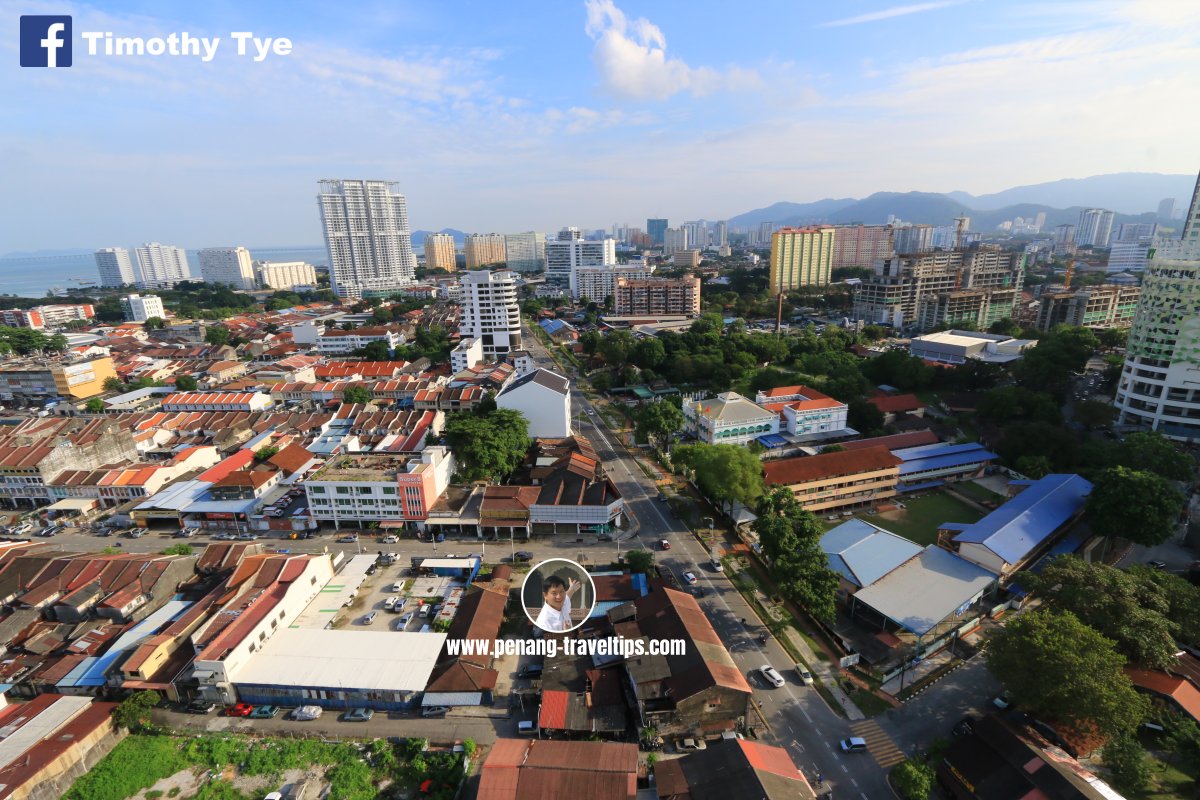 View of Jalan Gurdwara, one of the main roads in the Seven Streets Precinct (26 May 2017)
View of Jalan Gurdwara, one of the main roads in the Seven Streets Precinct (26 May 2017)
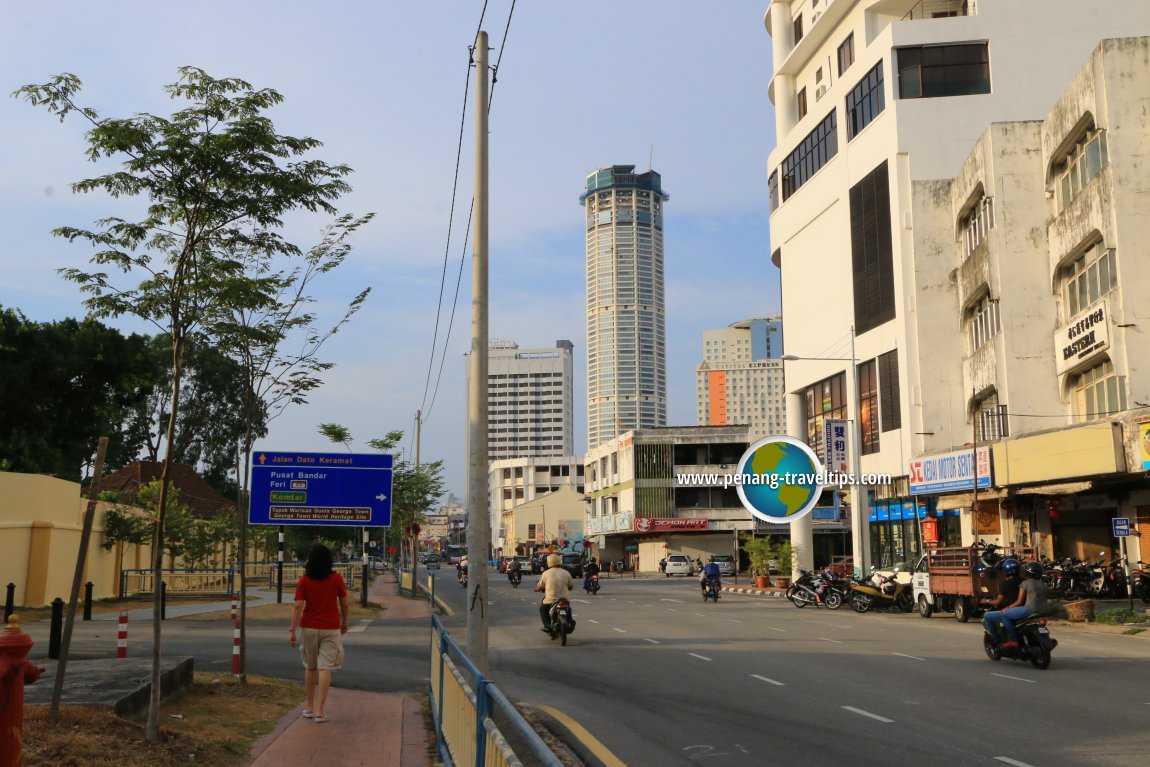 Brick Kiln Road. (15 April 2016)
Brick Kiln Road. (15 April 2016)
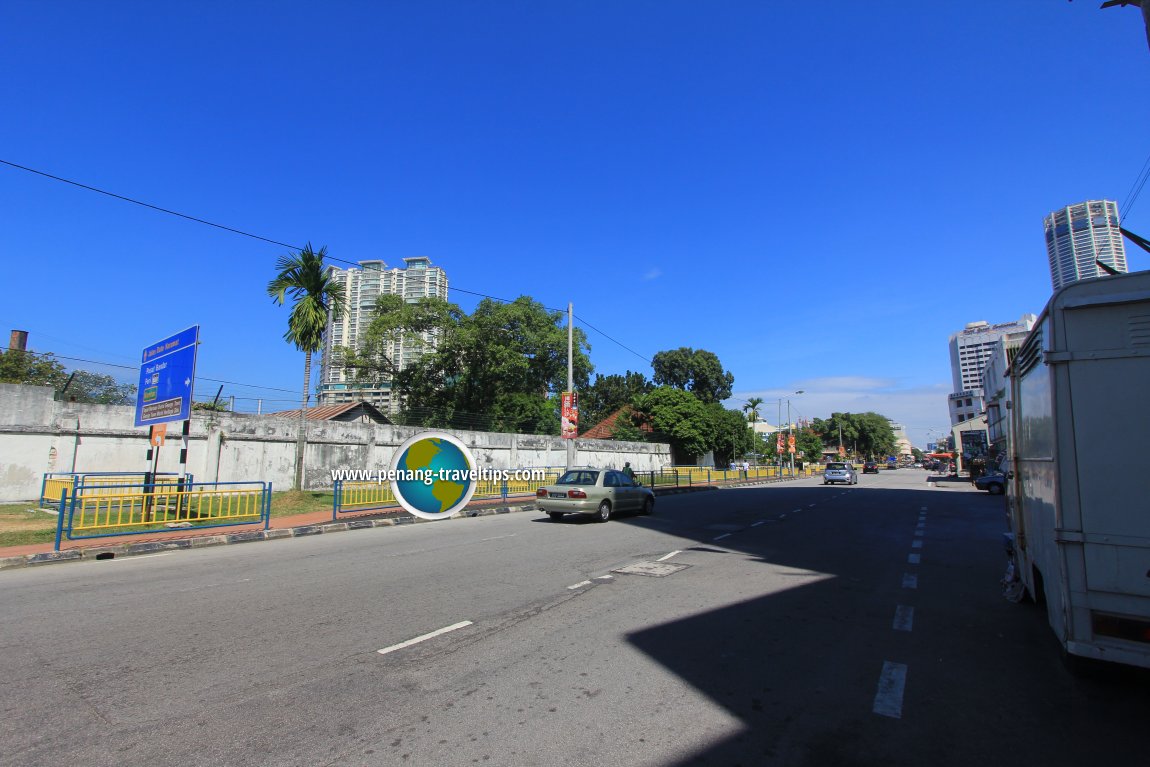 Brick Kiln Road. (3 February 2013)
Brick Kiln Road. (3 February 2013)
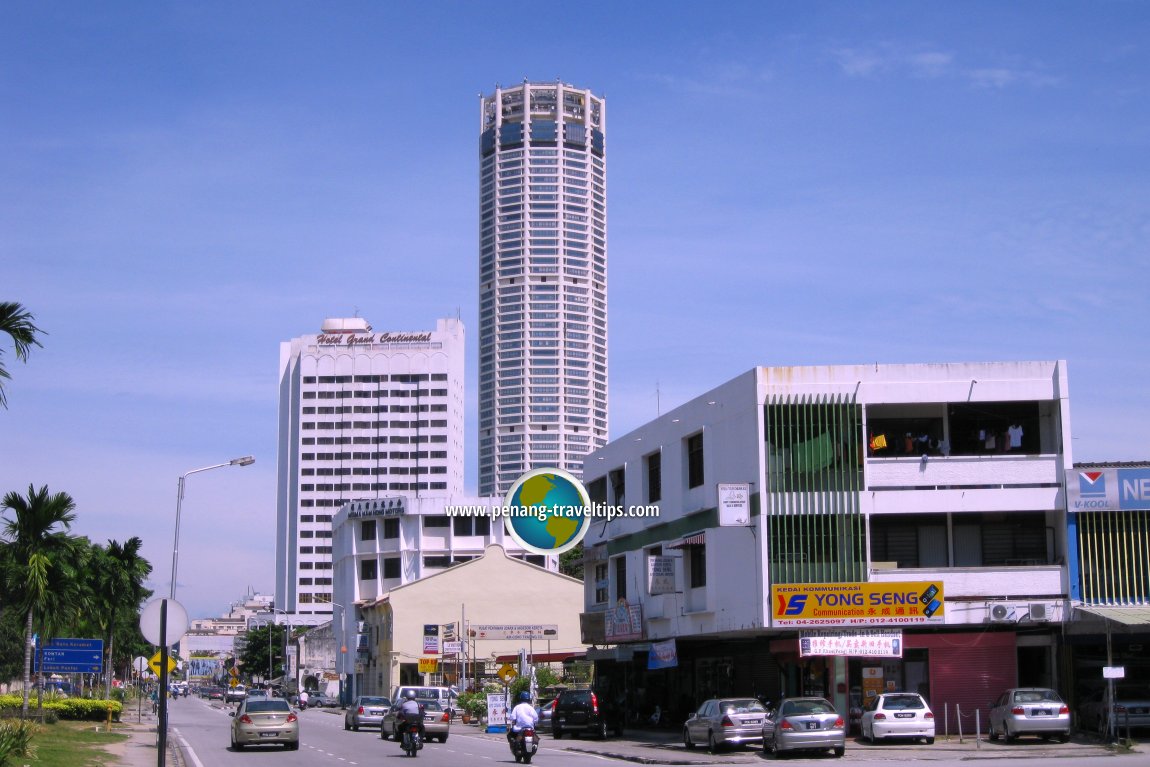 Brick Kiln Road. (2 December 2008)
Brick Kiln Road. (2 December 2008)
 Brick Kiln Road at night (26 May 2017)
Brick Kiln Road at night (26 May 2017)
How to go to Brick Kiln Road
Brick Kiln Road is served by Rapid Penang bus 302, 303, 307 and 401. It is possible to walk here from the Komtar Bus Terminal. Go along Tek Soon Street until Penang Road, then turn left, walk along Penang Road until Magazine Circus. Cross the junction to reach Brick Kiln Road, which is now signaged as Jalan Gurdwara.References
- Brick Kiln Road entry in Wikipedia, https://en.wikipedia.org/wiki/List_of_streets_in_George_Town,_Penang
List of Streets in Penang and Streets in Malaysia

Copyright © 2003-2025 Timothy Tye. All Rights Reserved.

 Go Back
Go Back